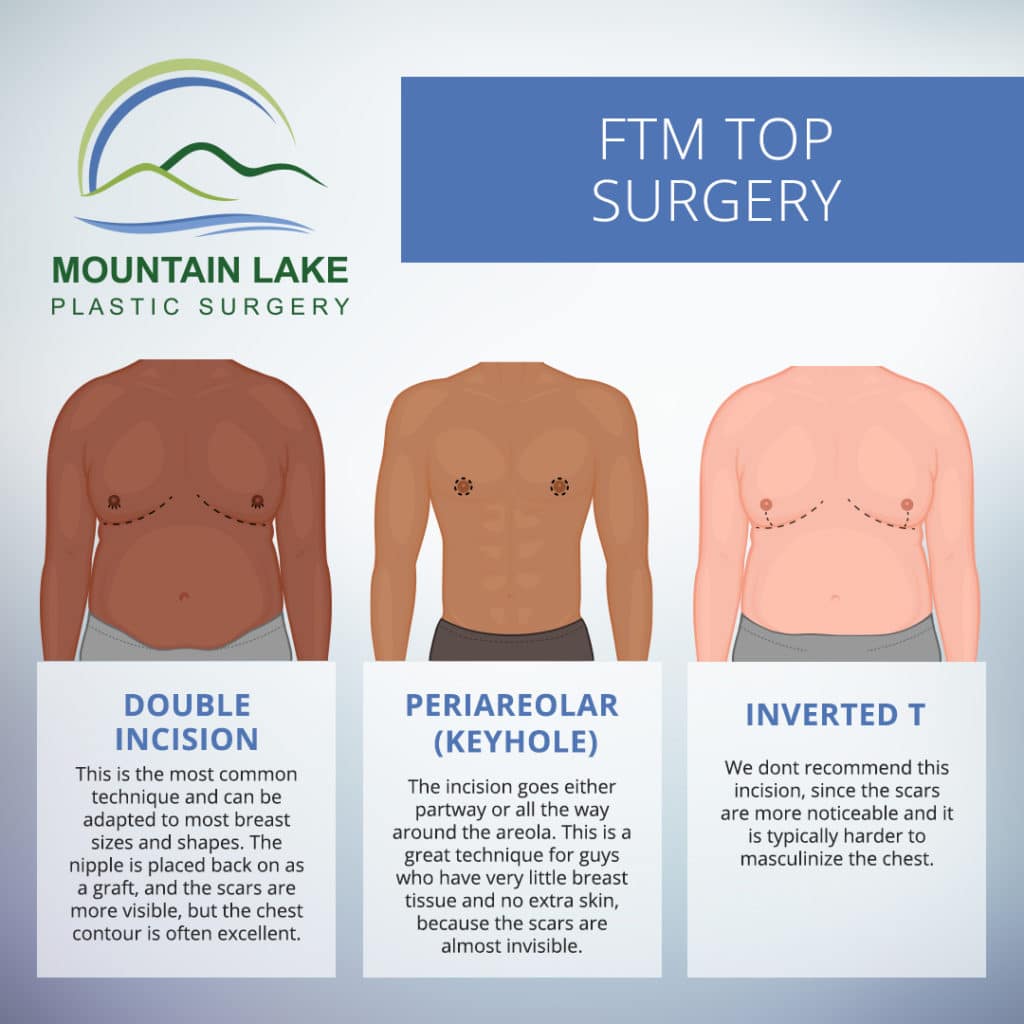For transgender individuals, top surgery can be an important part of confirming their female to male transition. Top surgery involves surgically removing breast tissue in order to help you achieve the outward appearance that matches how you feel on the inside.

Am I a Candidate?
The decision to have top surgery can be an emotional one, but can ultimately help you on your gender confirmation journey. While not all trans patients choose to have full gender surgery, many find top surgery to be a key part of their transition. There are several steps that will need to be taken in order to be a good candidate for surgery. Physically, your breasts should be finished developing and you should be in a healthy weight range. Many insurances in Vermont will cover transgender top surgery, but you’ll need to gather some documentation to support your case to the insurance company. Most will require a letter from your primary care physician and/or therapist stating that you are mentally prepared and ready for this next step. Most insurance companies will follow WPATH (World Professional Association for Transgender Health) guidelines, and many will require that you be on hormones for at least 12 months. Dr. MacLennan can meet with you to answer any questions about how to prepare for your procedure and what makes a good candidate.
How is the Surgery Done?
There are two main techniques that Dr. MacLennan may use based on the size and shape of the breasts, the patient’s preferences, and the elasticity of the skin. These include:
Peri-Areolar Technique
This is often called “keyhole surgery.” Peri-areolar top surgery involves an incision around the outer edge of the areola. The benefit of this technique is that the incisions are kept small and well-concealed. This technique is typically used on very small breasts with little if any droop. The breast tissue is removed through an incision around the areola, and liposuction is used to contour the chest. Very small amounts of excess skin can be removed in a donut-shaped pattern around the areola. Only about 10% of transmen are good candidates for this technique in our practice.
Double Incision Technique
A double incision procedure may be necessary for patients with larger breasts, sagging, or poor skin quality. This technique involves incisions under the breasts/ the crease of the pectoralis muscles and grafting of the nipple to a new, higher position that is more consistent with a male chest. Through these incisions, a larger amount of breast tissue and skin can be removed. The nipples can then be placed back on as grafts. Liposuction is also used at the same time to achieve optimal chest contouring. The incisions are longer and more visible but we have more ability to remove skin and masculinize the chest.
What is Recovery Like?
Recovery after FTM top surgery will involve a lot of rest, especially for the first week. It is important to take the necessary time off work or school, and you’ll need some help. There will be some swelling and general discomfort during this time, but most of our patients do very well with fairly minimal pain. Some larger men may need a drain for a few days after surgery. We recommend wearing a compression vest to help manage swelling. Activity is somewhat restricted for 2-4 weeks, but you can get back to most activities by 4 weeks postop.
To learn more about female to male top surgery, contact our office and request your consultation with Dr. MacLennan.
